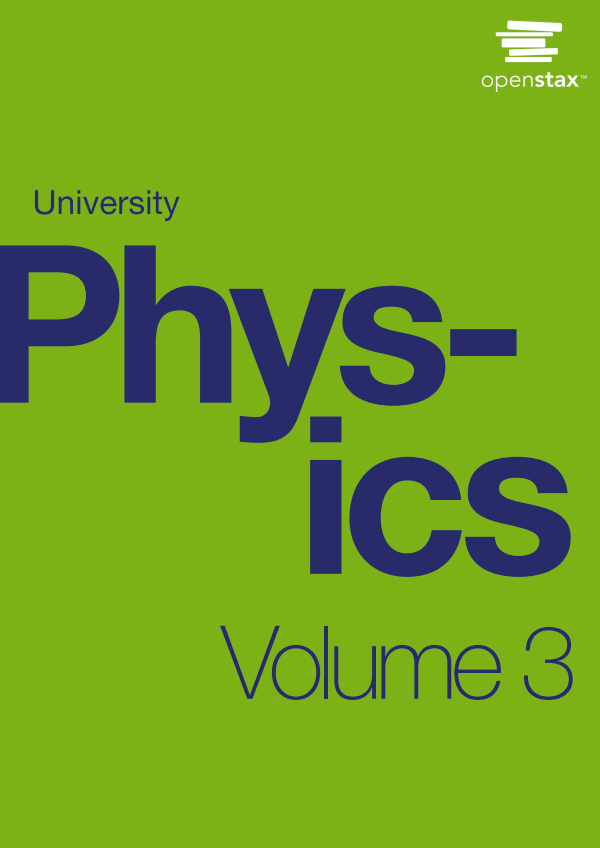University Physics is a three-volume collection that meets the scope and sequence requirements for two- and three-semester calculus-based physics courses. Volume 1 covers mechanics, sound, oscillations, and waves. Volume 2 covers thermodynamics, electricity, and magnetism, and Volume 3 covers optics and modern physics. This textbook emphasizes connections between theory and application, making physics concepts interesting and accessible to students while maintaining the mathematical rigor inherent in the subject. Frequent, strong examples focus on how to approach a problem, how to work with the equations, and how to check and generalize the result.
Our investigation of light revolves around two questions of fundamental importance: (1) What is the nature of light, and (2) how does light behave under various circumstances? Answers to these questions can be found in Maxwell’s equations (in Electromagnetic Waves), which predict the existence of electromagnetic waves and their behavior. Examples of light include radio and infrared waves, visible light, ultraviolet radiation, and X-rays. Interestingly, not all light phenomena can be explained by Maxwell’s theory.
Experiments performed early in the twentieth century showed that light has corpuscular, or particle-like, properties. The idea that light can display both wave and particle characteristics is called wave-particle duality, which is examined in Photons and Matter Waves.
In this chapter, we study the basic properties of light. In the next few chapters, we investigate the behavior of light when it interacts with optical devices such as mirrors, lenses, and apertures.
The Propagation of Light
Learning Objectives
By the end of this section, you will be able to:
• Determine the index of refraction, given the speed of light in a medium
• List the ways in which light travels from a source to another location
The speed of light in a vacuum c is one of the fundamental constants of physics. As you will see when you reach Relativity, it is a central concept in Einstein’s theory of relativity. As the accuracy of the measurements of the speed of light improved, it was found that different observers, even those moving at large velocities with respect to each other, measure the same value for the speed of light. However, the speed of light does vary in a precise manner with the material it traverses. These facts have far-reaching implications, as we will see in later chapters.
The speed of light in a vacuum is defined to be exactly 299 792 458 m/s (approx. 186,282 miles per second). The fixed value of the speed of light in SI units results from the fact that the metre is now defined in terms of the speed of light. All forms of electromagnetic radiation move at exactly this same speed in vacuum.
Different physicists have attempted to measure the speed of light throughout history. Galileo attempted to measure the speed of light in the seventeenth century. An early experiment to measure the speed of light was conducted by Ole Rømer, a Danish physicist, in 1676. Using a telescope, Rømer observed the motions of Jupiter and one of its moons, Io. Noting discrepancies in the apparent period of Io’s orbit, he calculated that light takes about 22 minutes to traverse the diameter of Earth’s orbit. However, its size was not known at that time. If Rømer had known the diameter of the Earth’s orbit, he would have calculated a speed of 227 000 000 m/s.
Another more accurate measurement of the speed of light was performed in Europe by Hippolyte Fizeau in 1849. Fizeau directed a beam of light at a mirror several kilometers away. A rotating cog wheel was placed in the path of the light beam as it traveled from the source, to the mirror and then returned to its origin. Fizeau found that at a certain rate of rotation, the beam would pass through one gap in the wheel on the way out and the next gap on the way back. Knowing the distance to the mirror, the number of teeth on the wheel and the rate of rotation, Fizeau was able to calculate the speed of light as 313 000 000 m/s.
Léon Foucault carried out an experiment which used rotating mirrors to obtain a value of 298 000 000 m/s in 1862. Albert A. Michelson conducted experiments on the speed of light from 1877 until his death in 1931. He refined Foucault’s methods in 1926 using improved rotating mirrors to measure the time it took light to make a round trip from Mount Wilson to Mount San Antonio in California. The precise measurements yielded a speed of 299 796 000 m/s.
The effective velocity of light in various transparent substances containing ordinary matter, is less than in vacuum. For example, the speed of light in water is about 3/4 of that in vacuum.
Two independent teams of physicists were said to bring light to a “complete standstill” by passing it through a Bose–Einstein condensate of the element rubidium, one team at Harvard University and the Rowland Institute for Science in Cambridge, Massachusetts and the other at the Harvard–Smithsonian Center for Astrophysics, also in Cambridge. However, the popular description of light being “stopped” in these experiments refers only to light being stored in the excited states of atoms, then re-emitted at an arbitrary later time, as stimulated by a second laser pulse. During the time it had “stopped” it had ceased to be light.











